Does this always happen to you- each time you want to make curries or stews, you always run out of lemongrass in the kitchen? It’s a real bummer, right? Whenever this happens, you can actually use a lemongrass substitute instead.
If you’re familiar with Asian food, then you must have an idea on the aroma and flavor of lemongrass. Although it will be difficult to be replicate the lemony, sweet, and unique aroma of lemongrass, you can use some other great substitutes. If you want to know each of them, check them out in the list below.
More...
1. Lemon Zest
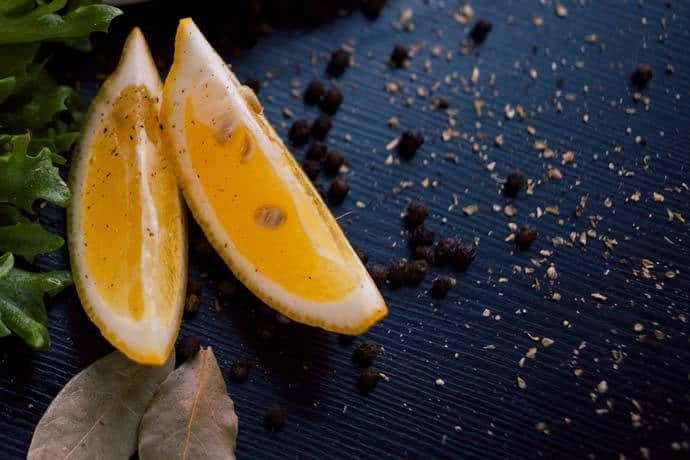
Lemongrass is popularly used in Thai cuisine to impart a lemony flavor to food. Which fruit is the best in giving that lemony flavor? Of course, lemons. As suggested by many food sites, like BBC Good Food, lemon zest is a great substitute for lemongrass because apart from the citrus taste, it is readily available.
Lemon zest is the exterior part of a lemon, which is the yellow part of the skin. When freshly grated, it gives a very intense lemon flavor and a little hint of bitterness. For every two stalks of lemon grass needed, you can use the lemon zest from one lemon.
Before zesting, wash the lemon first and pat dry with a paper towel. When grating the skin from lemons, make sure to remove the thin outer skin only and don’t include the white pith because it will make your food taste very bitter. To learn how to zest a lemon, watch this video.
If you would like to replicate the herbal undertone of lemongrass in fish stews and broths, you can combine lemon zest with other herbs, like the arugula leaves. Arugula is a Mediterranean herb that is known for its strong peppery taste. If a recipe is calling for one stalk of lemongrass, substitute it with one teaspoon of lemon zest and one arugula leaf.
2. Coriander Stalks + Fresh Ginger
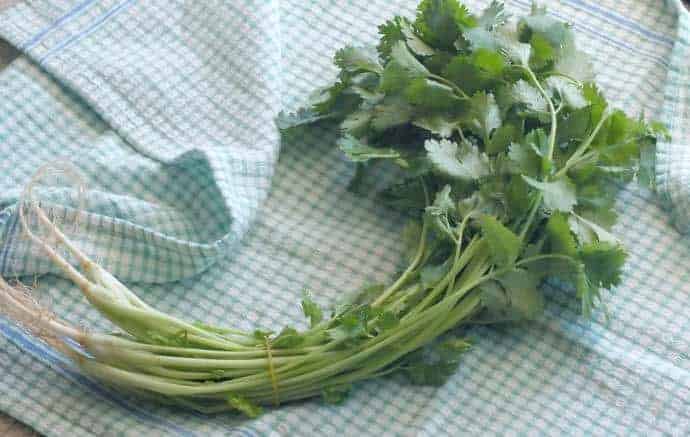
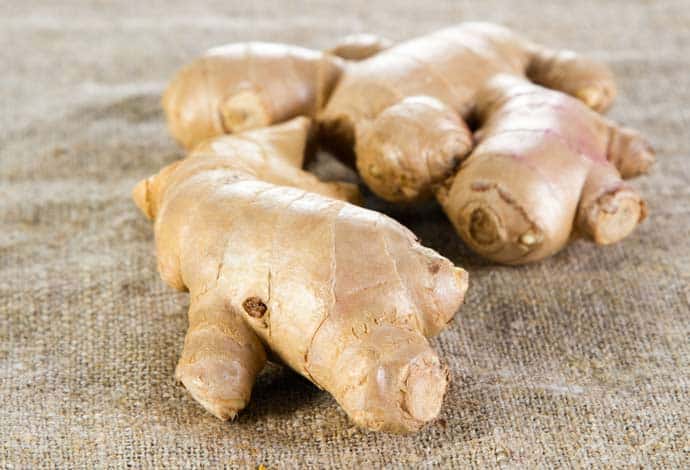
For soups and broths, you can substitute one stalk of lemongrass with two teaspoons of coriander stalks and two teaspoons of fresh ginger. Coriander stalks are can be used instead of the leaves because they pack more flavor. In fact, coriander stalks are traditionally used as an ingredient for Thai curry pastes rather than the leaves.
Coriander stalks have a unique zesty, aromatic flavor. Fresh ginger, on the other hand, almost has the same flavor with lemongrass: slightly sweet and pungent.It’s only natural to think of fresh ginger as a lemongrass substitute because lemongrass has a tinge of ginger flavor, according to Gourmet Garden. When combined with coriander stalks, they give a high fusion of flavor almost reminiscent to fresh lemongrass.
When we say fresh ginger, it means really fresh. You can tell that the ginger is fresh if it feels rock hard and the skin is smooth. Avoid buying ginger which is lightweight or has wrinkled-looking skin. Keep the ginger fresh longer by storing it your refrigerator’s crisper wrapped in a plastic bag.
3. Lemon Balm
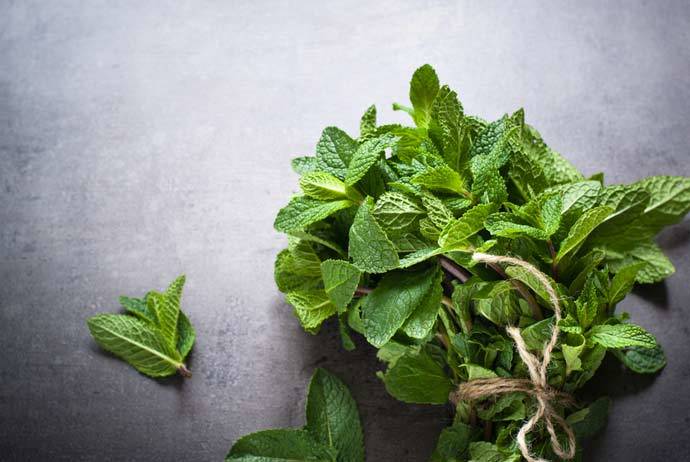
If you’re doing desserts and the recipe calls for one stalk of lemongrass, use four lemon balm leaves instead. You can add the lemon balm towards the end of the cooking process because it tends to have a delicate citrus flavor and aroma. Ideally, chop the leaves before adding them to a dish.
You can buy lemon balm in the supermarket along the herb section either fresh or dried. If you lemon balm in your backyard, then you’re lucky. You can just harvest the leaves each time you run out of lemongrass in your kitchen.
Learn how to harvest fresh lemon balm in this video.
To store fresh lemon balm and keep their flavor longer, try freezing them. First, chop the leaves then combine them with fresh water. Place each mixture in an ice cube tray and store them in the freezer. For dried lemon balm, keep them in a resealable plastic bag and store in a cool, dry place.
4. Kaffir Lime Leaves
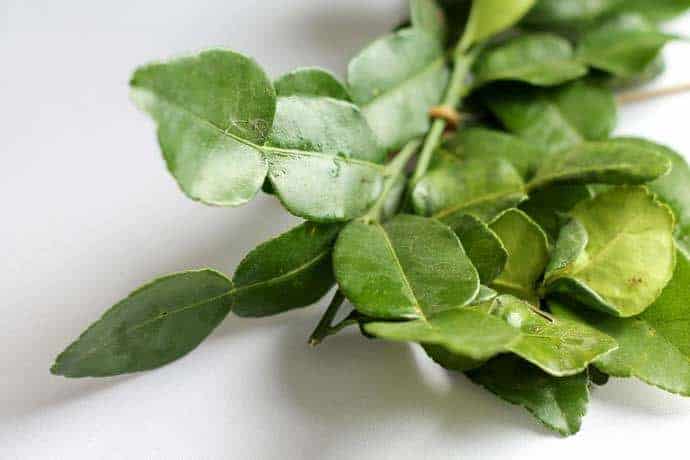
Other citrusy leaves that can be a good lemongrass substitute are Kaffir Lime. These leaves are easily recognizable by their green color and double leaf lobes. You can find them in most Asian grocery stores and specialty grocery shops.
Kaffir lime leaves are suitable for cooking soups and curries, To use, just leave the kaffir lime leaves whole or tear it into two if you’re using older leaves. By tearing the leaf into two, you can remove the midrib and stalk which may cause bitterness in your dish. When you eat, just move the leaves aside on your plate or you can make it more convenient by removing the leaves before you serve the dish.
To improve the citrus flavor of kaffir lime leaves, you can combine them with other ingredients, like lemon juice and lime zest. For every stalk of lemongrass needed, you can substitute it with one kaffir lime leaf, one tablespoon of lime zest, and two tablespoons of freshly squeezed lemon juice.
5. Kroeung (Lemongrass Paste)
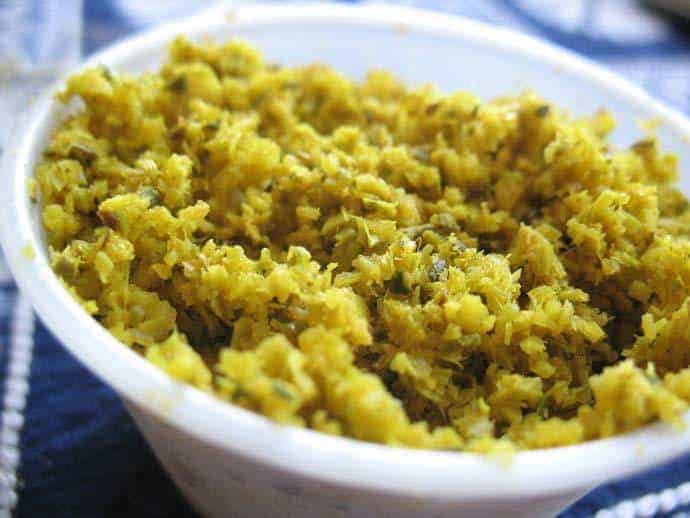
If you can’t find any fresh lemongrass in the grocery store, you can use the closest thing, which is Kroeung, a lemongrass paste from Cambodia. You can buy this online, here or in grocery stores. This lemongrass paste may come in various colors: red, yellow, and green.
The red kroeung receives its red color from a kind of dried red pepper. Instead of lemongrass leaves, the stalks are used to allow the color of red peppers to dominate. For the green variety, lemongrass leaves are dominantly used over the stalks. Meanwhile, the yellow variety gets its color from turmeric.
Unlike Thai curry pastes, kroeung is easy to make in your home. Aside from using it as a substitute for lemongrass, you can also use it as a great base to many recipes, like soups, curries, and vegetables. To substitute the kroeung to dishes that call for lemongrass, use one tablespoon of the paste to each tablespoon of chopped fresh lemongrass needed.
For a basic yellow kroeung recipe, all you need are these ingredients; lemongrass, garlic, galangal, turmeric, and kaffir lime leaf. To make, ground all ingredients in a food processor or the traditional mortar and pestle. Watch how to use the mortar and pestle in making the lemongrass paste in this video.
6. Lemon Verbena Leaves

Another shrub that gives a citrus flavor almost similar to lemongrass is the lemon verbena. Although the leaves can’t give you the exact lemongrass flavor, they can give that zing that you desire. For every stalk of lemongrass needed, you can use two leaves of lemon verbena in sauces, savory cakes, and curries.
Only a small amount is needed for your dishes because this lemony shrub has quite an intense flavor and aroma. To use, just chop or tear the leaves into the dish to release flavor properly. You need to chop them finely because the leaves can be very tough. Another way is to use the whole leaf and removing them before serving.
If you have harvested or bought a lot of lemon verbena, you can freeze them fresh in ice cube trays mixed with water. You can also dry the leaves first before storing them in a sealed container. Also, your butter comes in handy by mixing its softened form with chopped leaves, then storing them in an airtight container in the fridge. You can also form the softened butter mixture into balls and store them in thick resealable bags.
7. Lemon Juice

The quickest way to add a citrus flavor to your dish is to use lemon juice. Don’t forget to keep the quantity in check because too much lemon juice may turn your dish very acidic. For optimum taste, use the freshly squeezed one and never the bottled kind.
Of course, picking the freshest lemon is a critical element to good tasting lemon juice. When buying lemons, feel them and pick those that are slightly soft, not mushy. When a lemon is soft, it means, it is juicy and the skin is thin.
To extract the juice from a lemon, all you need is a citrus juicer, like this one. First, slice the lemon in half then load it on the citrus juicer and squeeze. You can also use a fork to juice out the lemon, as shown in this video.
Use A Lemongrass Substitute If You Don’t Have One!
Did you enjoy reading the list above? Thanks to this discovery, I can already cook my curries and stews even if I don’t have a lemongrass at home. I can readily pick from a lemon zest to lemon juice and lemon balm. To make a great base for a variety of dishes, my favorite is making a lemongrass paste which is actually easier and more flavorful.
Have you found the best lemongrass substitute that best suits your preference? Let us know in the comments section. If you like this article, please don’t be shy to share it with your friends and family.

